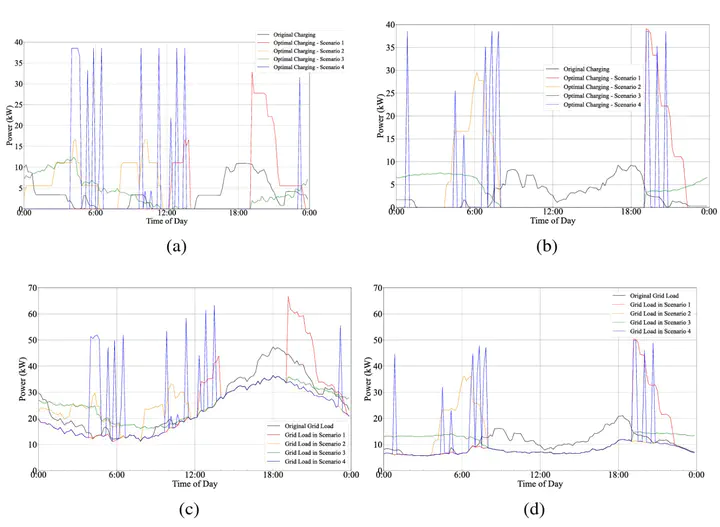Managed Residential Electric Vehicle Charging Minimizes Electricity Bills While Meeting Driver and Community Preferences

Transitions to electric vehicles (EV) are expected to increase electricity use in residences, where most tend to recharge. We develop a mathematical programming framework for shifting residential EV charging during low electricity pricing hours to minimize the additional electricity costs that a household incurs from charging their vehicle. The model also aims to meet additional household and their community preferences by adopting four secondary objectives: charging as soon as possible when the user arrives at home, charging as late as possible before the user leaves home, charging for valley filling and peak shaving of the residential load, and charging in a shared community hub by using a fast charging station. We analyze granular residential energy data from a sample of Austin households in 2018. We conduct an empirical analysis to compare households’ electricity bills under four electricity pricing schemes, including flat rates and time-of-use rates, both with and without a separate meter for EV charging. Our findings indicate that if charging behaviors remain unchanged, installing a separate meter for EVs is more expensive than treating EVs as another residential plug load. However, under time-of-use EV charging tariffs, households should adjust their charging behaviors, as validated by our optimization model. Implementing all four secondary charging objectives successfully avoids the on-peak periods of the EV charging rate and reduces households’ overall daily electricity costs by 38.87 % during the summer and by 44.3 % during the winter. Charging as soon as possible, charging as late as possible, and charging at a shared station provide drivers with increased flexibility. Charging as soon as possible and charging as late as possible lead to the lowest charger utilization, with the former having the longest charging stop time before home departure and the latter allowing for the longest charging start time upon home arrival. Charging at a shared station gives rise to the lowest share of charging time over dwell time. Charging for valley filling and peak shaving of the residential load offers less flexibility but has the advantage of flattening the load curve and mitigating high peak loads. This proves crucial in safeguarding the community’s energy distribution infrastructure.